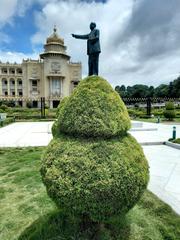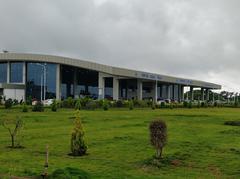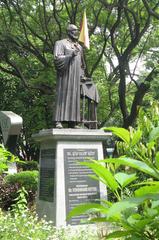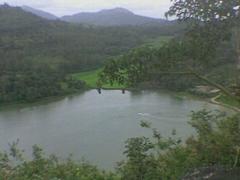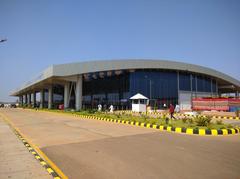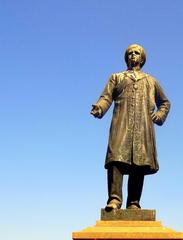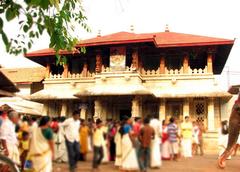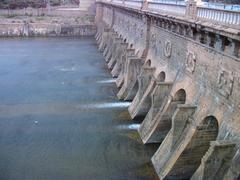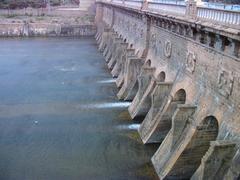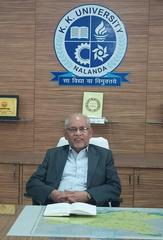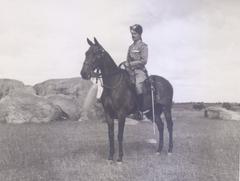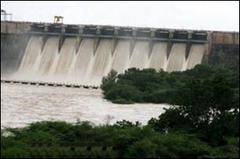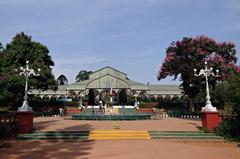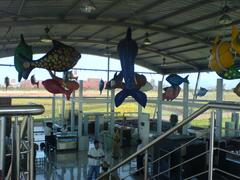Ganesha Temple Idagunji: Visiting Hours, Tickets, and Comprehensive Guide to Karnataka’s Historical Gem
Date: 04/07/2025
Introduction
Nestled amidst the lush landscapes of Karnataka’s Uttara Kannada district, the Idagunji Ganesha Temple stands as a beacon of spiritual devotion, architectural heritage, and living tradition. Devotees and travelers alike are drawn to this ancient temple for its distinctive two-armed (dvibhuja) black stone idol of Lord Ganesha, exceptional rituals, and vibrant festivals. With origins tracing back over 1,600 years, Idagunji is not only a pivotal pilgrimage site but also a window into the region’s history and culture. This guide provides a detailed exploration of the temple’s history, legends, visitor information, and practical travel tips to ensure a meaningful and well-prepared visit (Viharadarshani; Temple Gyan; lopezparadise.in; Idagunji Official Website).
Table of Contents
- Historical and Mythological Background
- Architectural Features and Artistic Heritage
- Festivals and Rituals
- Visiting Hours, Entry, and Facilities
- Accessibility and Travel Tips
- Nearby Attractions
- Frequently Asked Questions (FAQs)
- Visuals and Media Guidance
- Conclusion and Travel Resources
Historical and Mythological Background
Ancient Origins and Sacred Legends
The Idagunji Ganesha Temple’s origins date to the 4th century CE, making it one of the oldest and most respected Ganesha temples in South India (Viharadarshani). According to mythology, the sages (rishis) performed intense rituals here to counteract spiritual decline at the dawn of the Kali Yuga. Their efforts, repeatedly thwarted by obstacles, led them to seek counsel from the sage Narada, who brought Lord Ganesha to the site. With Ganesha’s blessings, the rituals succeeded, and the deity agreed to remain at Idagunji, manifesting in a unique dvibhuja form to aid devotees.
Regional and Pilgrimage Importance
Idagunji holds a central place among the revered Ganapati Kshetras along Karnataka’s coast and is a key stop on the “Ganesha Shatka Kshetra” pilgrimage circuit. The temple’s enduring reputation as a wish-fulfilling site (“Kalpataru” of the Kali Yuga) draws more than a million visitors each year (lopezparadise.in).
Architectural Features and Artistic Heritage
Temple Layout and Design
The temple is strategically situated near the Sharavathi River’s left bank (“Eda” means “left” in the local dialect), blending harmoniously with its natural surroundings (Idagunji Official Website). The approach features a stone-paved pathway leading through modest gopurams (gateways) that introduce visitors to the tranquil, sacred environment.
Sanctum Sanctorum and Idol
At the heart of the temple is the garbhagriha (sanctum sanctorum), constructed from local stone for coolness and serenity. The two-armed Ganesha idol stands in a rare posture, holding a lotus bud and a modaka, with a gentle smile that radiates peace. The idol’s simplicity—without the traditional rat vahana—symbolizes humility and directness.
Mandapa and Interior Carvings
The main mandapa (pillared hall) hosts rituals and gatherings, its robust stone pillars and carved wooden beams displaying regional artistry. Intricate wooden carvings of Ganesha, the mouse vahana, and floral motifs enrich the interior.
Artistic Traditions
The temple is also known for lavancha (vetiver grass) Ganesha masks, crafted by local artisans and available as souvenirs. These aromatic masks highlight the integration of folk art and ritual.
Festivals and Rituals
Daily and Special Rituals
The temple’s daily schedule includes abhisheka (ritual bathing), aarti (lamp waving), and naivedya (food offerings). The sacred Ganesha-tirtha pond is used for purification rites (travelescape.in).
Major Festivals
The most significant celebrations are Ganesh Chaturthi and Sankashti Chaturthi, featuring elaborate rituals, processions, music, and distribution of prasad. These festivals attract vast crowds and embody the temple’s vibrant religious life (lopezparadise.in).
Unique Ritual Practices
The temple is famed for the marriage approval ritual (“prasada keluvudu”), especially among the Bandhi community. Prospective families place chits at the deity’s feet; their positioning is interpreted as divine consent for marriage (Viharadarshani; Wikipedia).
Visiting Hours, Entry, and Facilities
- General Hours: Daily from 6:00 AM to 8:00 PM, with extended hours during major festivals.
- Festival Hours: On special occasions, opening may begin as early as 5:00 AM and extend until 9:00 PM (Temple Gyan).
- Midday Break: The temple typically closes from 1:00 PM to 3:00 PM.
- Entry Fees: Entry is free; donations are welcomed for temple maintenance. Tokens for lunch prasadam are available on site.
- Facilities: Restrooms, drinking water, shops for puja offerings, and a temple shop with devotional literature and souvenirs.
Accessibility and Travel Tips
Getting There
- By Air: The nearest airport is Mangalore International Airport (175 km).
- By Train: Honnavar (21 km) and Murudeshwar (16 km) are the closest major railway stations.
- By Road: Connected by bus and taxi from Murudeshwar, Honnavar, and Manki. Ample parking is available near the temple (Trippy Igloo).
Accessibility Features
- Ramps and handrails assist elderly and differently-abled visitors.
- Security and staff can provide additional assistance upon request.
- Modest dress code is required; shoes must be removed before entry.
Accommodation and Food
- Stay: Basic rooms are available at the temple. More comfortable lodgings can be found in Honnavar and Murudeshwara.
- Food: Lunch prasadam is served in the temple. Local eateries offer simple meals and refreshments (Honavar.com).
Nearby Attractions
- Murudeshwar Temple and Beach (20 km): Famous for its towering Shiva statue and scenic coastline.
- Gokarna: Renowned for its beaches and temples, offering a tranquil spiritual escape.
- Sharavathi River Backwaters: Ideal for relaxation and nature walks.
- St. Mary’s Island: A unique geological and ecological destination.
Frequently Asked Questions (FAQs)
Q1: What are the temple’s visiting hours?
A: Open daily from 6:00 AM to 8:00 PM, with slight variations during festivals.
Q2: Is there a ticket or entry fee?
A: Entry is free for all visitors; donations are appreciated.
Q3: Can I participate in rituals?
A: Visitors may observe or participate in daily abhisheka and special poojas.
Q4: Is the temple accessible for seniors and differently-abled visitors?
A: Yes, the temple provides ramps and assistance, though some terrain may require help.
Q5: When is the best time to visit?
A: October to March for pleasant weather; Ganesh Chaturthi for a festive experience.
Q6: Are guided tours available?
A: Yes, local guides and temple staff may offer tours on request.
Q7: Is photography allowed?
A: Permitted in outer areas; not allowed inside the sanctum sanctorum.
Visuals and Media Guidance
Enhance your virtual or physical visit with visuals such as:
- The stone-paved approach and main entrance (alt=“Idagunji Ganesha Temple entrance with stone pathway”).
- The dvibhuja Ganesha idol (alt=“Two-armed Lord Ganesha idol at Idagunji Temple”).
- Festival decorations and crowds (alt=“Ganesh Chaturthi celebrations at Idagunji Temple”).
- Handcrafted vetiver grass Ganesha masks (alt=“Traditional lavancha Ganesha masks”).
High-quality images are available on the official Idagunji Temple website.
Conclusion and Travel Resources
The Idagunji Ganesha Temple is a remarkable blend of spiritual sanctity, cultural artistry, and historical depth along Karnataka’s picturesque coast. With its unique rituals, inclusive facilities, and proximity to other major attractions, it offers a rewarding experience for every visitor—whether a devotee, history enthusiast, or cultural explorer.
For further planning, updated schedules, and virtual tours, consult these resources:
- Viharadarshani
- Temple Gyan
- lopezparadise.in
- Idagunji Official Website
- Wikipedia - Ganesha Temple, Idagunji
Plan your journey now—download the Audiala app for personalized guides, interactive maps, and latest updates. Stay connected with us on social media for tips on Karnataka’s cultural destinations and upcoming temple events.

